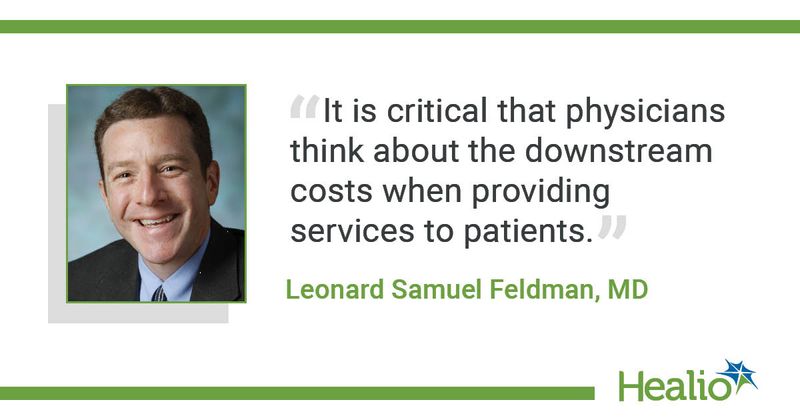Low-value screening in primary care often leads to specialist care
Low-risk patients in Canada who received Pap tests, chest X-rays or ECGs as part of an annual health examination were more likely to have subsequent specialist care than untested patients, a population-based cohort study showed.
“A recent study demonstrated that routine tests in low-risk patients conducted as part of an annual health examination in primary care are performed frequently,” Zachary Bouck, research associate at St. Michael's Hospital in Toronto, and colleagues wrote in JAMA Internal Medicine. “However, whether these screening tests are associated with increased downstream clinical service use is unknown to date.”

In the United States, low-value services cost the health care system an estimated $75.7 and to $101.2 billion annually, according to the researchers.
Bouck and colleagues assessed the probability of low-risk patients who received Pap tests (29,194 patients; mean age, 45.5 years); chest X-rays for CVD and pulmonary disease (43,532 patients; mean age, 47.5 years; 38.5% women) or ECGs for CVD (245,686 patients; mean age, 49.9 years; 51.1% women) to receive follow-up care vs. patients who did not receive these same tests.
After 90 days since the examination, chest X-rays in low-risk patients were associated with an additional 0.87 (95% CI, 0.69-1.05) patients having an outpatient pulmonology visit and 1.96 (95% CI, 1.71-2.22) patients having an abdominal or thoracic CT scan per 100 patients. Over the same time period, ECGs in low-risk patients were tied to an additional 1.92 (95% CI, 1.82-2.02) patients having an outpatient cardiologist visit; 5.49 (95% CI, 5.33-5.65) patients having a transthoracic echocardiogram; and 4.46 (95% CI, 4.31-4.61) patients having a cardiac stress test.
After 180 days since the examination, the researchers found that Pap testing in low-risk patients was associated with an additional 1.31 (95% CI, 0.84-1.78) patients having an outpatient gynecology visit; 52.8 (95% CI, 51.9-53.6) patients having a follow-up Pap test; and 0.84 (95% CI, 0.66-1.01) patients having a colonoscopy per 100 patients.
“The results of the present study support the premise that seemingly low-risk screening tests may lead to physician visits or tests that could inconvenience the patient and, in some instances, expose the patient to potential harm,” Bouck and colleagues wrote. “Therefore, in discussing the risks and benefits of screening tests with low-risk patients, physicians should help patients weigh the potential for harm against uncertain benefit.”
Although the results support existing research, Timothy Anderson, MD, of the division of general medicine at Beth Israel Deaconess Medical Center, and colleagues wrote in a related editorial that the findings are limited because they are based on administrative data.
Thus, Anderson and colleagues suggested that approaches that more accurately characterize testing cascades and outcomes, ascertain the drivers of low-value testing and evaluate interventions to reduce its use may offer a better understanding of its efficacy.
“Successful efforts to de-implement low-value practices will require an alignment of interests and an understanding of the negative consequences of routine testing beyond costs,” they wrote.
References:
- Anderson TS, et al. JAMA Intern Med. 2020;doi:10.1001/jamainternmed.2020.1588.
- Bouck Z, et al. JAMA Intern Med. 2020;doi:10.1001/jamainternmed.2020.1611.
